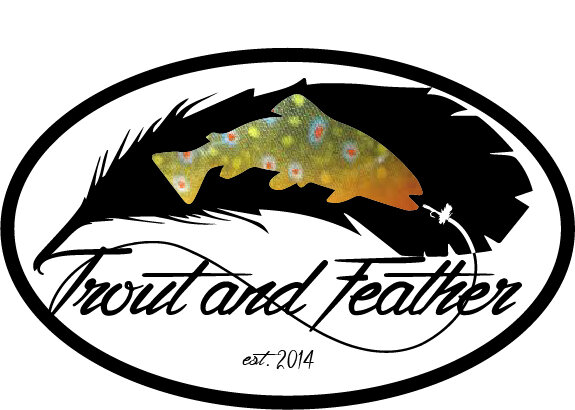By Tim Cammisa
For my daily fishing, I no longer wear a vest. Instead, a waterproof backpack houses large items, and the Umpqua ZS2 Wader Chest Pack attached to my wader straps holds all on-water essentials.
Fly fishing is an incredible sport, full of nuances and personal preferences. But let’s be honest—there are a lot of things we’re told we “need” that we really don’t. If you’re looking to simplify your setup and focus on what truly matters, here are five things you can ditch today.
1. You Don’t Need a Fly Fishing Vest
Picture this: You drive up to your favorite stream, step out of your car, and start gearing up. What’s the first thing you put on after your waders? If your answer is a vest, think again.
Years ago, a fly fishing vest was considered essential. I still remember getting my first one—it felt like Christmas! I packed it full of strike indicators, split shot, and more flies than I could ever use. But over time, I realized I didn’t need a vest at all.
Instead, I’ve experimented with different carrying systems. A sling pack keeps my gear accessible but out of the way. A backpack works well when I’m not changing flies often. A hip pack offers a minimalist approach. And sometimes, I just wear a shirt with a pocket—stashing a few flies, tippet, and hemostats. Less gear means more freedom.
Now, when I’m fly fishing throughout Pennsylvania, my typical system involves a waterproof backpack for larger items, plus a drink and snack. My net easily attaches to this pack. In the front, I use a small chest pack that attaches to my wader straps. This system is out of the way and still holds more than enough for a full day on the water.
2. You Don’t Need the Most Expensive Fly Rod
We’ve all done it—walked into a fly shop and picked up the most expensive rod just to feel how it wiggles. And yes, I do own high-end fly rods (I love my Master Nymph fly rod, my Orvis Blackout, and so many others!), but are they necessary? You already know the answer: Not at all.
Expensive rods do offer benefits, like better taper design, lightweight materials, and overall precision. But you don’t have to spend a fortune to catch fish. There are fantastic mid-range rods that perform beautifully. If you’re torn between two rods, send me an email—I’d be happy to give you honest feedback on what I’d choose and why. Email here: tcammisa@gmail.com
3. You Don’t Need to Fight the Wind
Is the wind critical with saltwater? Absolutely! And a light breeze always helps stillwater fly fishing, as a flat surface gives the fish too much time to inspect dry flies. There are certain conditions in fly fishing that make things difficult, but nothing is worse than wind. A little snow? No problem. Light drizzle? Perfect. Cloud cover? Even better. But wind? Game over.
I once attended a rod gathering where the legendary Joan Wulff was demonstrating casting techniques. Someone asked her how to deal with wind, hoping for a pro-level secret. Her answer? “You go somewhere else.” And she’s right. You can adjust your casting angle, tighten your loop, or get low to the ground, but if the wind is howling, it’s best to move to a more sheltered location. No fancy technique will make a 30-mph headwind enjoyable.
4. You Don’t Need to Be an Entomologist
Do you love bugs? I do. I enjoy identifying insects and understanding what trout are eating. But do you need to know the Latin names of every mayfly and caddisfly? Absolutely not.
What’s important is having a basic understanding of the major food sources trout eat. Dave Whitlock’s book, Trout and Their Food, is a great resource. It’s an easy read that provides practical insights without overwhelming you with scientific details. Read it once, then read it again—it’ll change how you see the water.
5. You Don’t Need a Parachute Adams
I know this might stir some controversy, but hear me out. The Parachute Adams is a fantastic dry fly. It works in Iceland, Montana, Colorado, Pennsylvania, Alaska—you name it. But do you need it? No.
I don’t fish the Parachute Adams often, and I still catch plenty of fish. If my buddy tells me the fish are eating them, I’ll nod and tie on something else. Confidence is key in fly fishing, and there are plenty of other mayfly and caddisfly imitations that work just as well. Just how much does confidence matter?
In my newest book, Tying Euro Nymphs, I asked over 30 of today’s top anglers which flies they wouldn’t fish without. No two lists were the same! Are flies important? Absolutely! But develop a list of those that you have confidence in, then focus on your fishing techniques. If you’re new to fly fishing and wondering what dry flies to start with, shoot me an email—I’ll share my top three: Tcammisa@gmail.com
Focus on What Matters
At the end of the day, fly fishing is about enjoying the water, the fish, and the experience. Cutting down on unnecessary gear and distractions lets you focus on what truly matters.
Now that we’ve covered what you don’t need, let’s talk about what you do need. Click on my playlist below for videos on my fly rod recommendations, necessary gear, and more. Link: Fly Fishing Things You Need!


